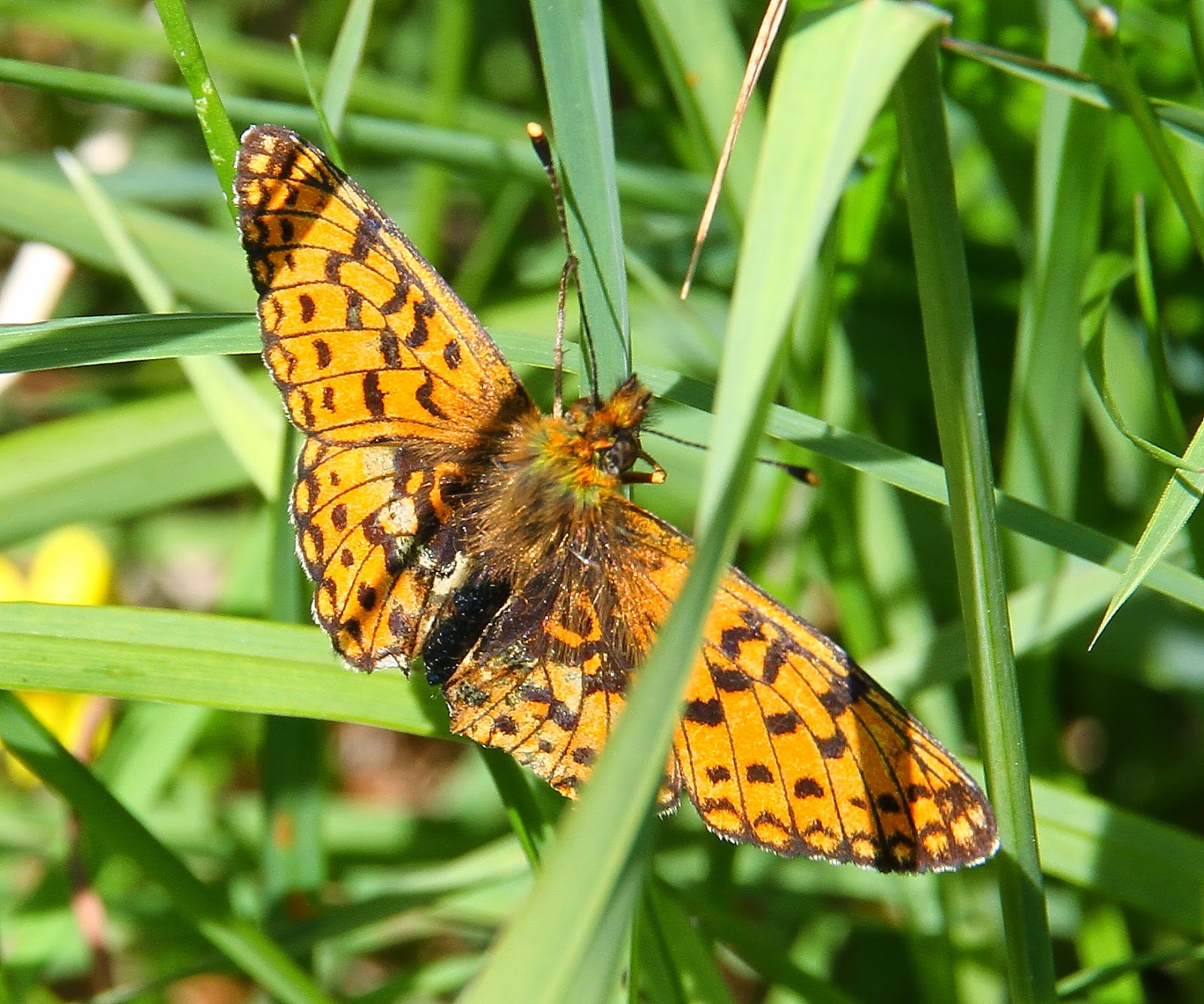This is Part 2 of my Insect Photospot on the Dorset Butterflies. A big part of the intention of these two Dorset Butterfly blog posts is to show what a good diversity of Butterflies we are lucky to have in Dorset. Another good thing is with a modesty priced Lumix camera you can get some good photos of these species, as all of the photos taken before Oct 13 demonstrates. Most of the Dorset Butterflies are either fairly common & widespread or can be found at well known sites. There are a handful of scarce breeding species in Dorset, where the site is potentially more sensitive. But all of these species can be found at well known sites in the neighbouring counties. So next January, set yourself a New Years challenge & go out & enjoy the Butterflies in your local county.
Silver-washed Fritillary: Female. Dorset (9 July 14)
Silver-washed Fritillary: Female aberration Valesina. Dorset (9 July 14)
Small Pearl-bordered Fritillary: Purbeck. (9 June 14)
Small Pearl-bordered Fritillary: Purbeck. (9 June 14)
Duke of Burgundy
Fritillary: Cerne Abbas (2 June 13)
Essex Skipper: Unfortunately, a species I have yet to photograph
Additionally, I've seen 3 vagrant species in Dorset: Swallowtail, Monarch & Large Tortoiseshell. Unfortunately, I've no photos of the Large Tortoiseshell which spent several days at Durlston in July 2008. I will just have to hope another one appears & hangs around in Dorset in the future.
Swallowtail: There are plenty more photos on Mugshots post of the July 2014 Swallowtails so I've used one of my favourite ones instead. This is Individual B at St Aldhelms (6 July 14)
Monarch: Easton, Portland (8 Sept 12). I've also seen them in Winspit on 2 Autumns in October 1995 & October 1999
Monarch: Easton, Portland (8 Sept 12)
Finally, there are the Map Butterflies that were found in Aug 14. This now looks like it was a deliberate release, although the person responsible is claiming it was accidental, to avoid a potential prosecution for releasing them.
Map: Swanage (Aug 14)
The
majority of the UK breeding species occur in Dorset. However, the
following UK breeding species do not occur or have died out in Dorset:
Wood White (potentially recently died out), Black Hairstreak, Large
Blue, Northern Brown Argus, High Brown Fritillary, Pearl-bordered
Fritillary (has probably been lost to Dorset in the last couple of
decades), Glanville Fritillary (has occurred as the Isle of Wight
population has briefly expanded to the mainland), Heath Fritillary,
Mountain Ringlet, Scotch Argus, Large Heath & Checkered Skipper. In addition,
there is one Irish species which occurs in Northern Island & which
I've not seen as I cannot justify the costs of a trip to Northern
Ireland to see it: Real's Wood White.
There are a number of vagrant species to the UK which haven't
occurred or have rarely occurred in Dorset. Camberwell Beauty is the
one of the commonest vagrants to the UK (but mainly on the East Coast) & a species I am yet to see in the UK. There have been the occasional Camberwell Beauty records in Dorset in the 17 years I've lived in the County. The problem with seeing a Camberwell Beauty in Dorset, is some photographers are so desperate to photograph species like Camberwell Beauties is they will buy some commercially bred pupae & then release them into the UK countryside to take their photos. I do know one local Butterfly photographer (& well known Bird stringer from the 80s) was prone to doing this. Not only is this environmentally unsound, but it also significantly tarnishes the reputation of real migrants as it can be difficult to assess the vagrancy of individual Butterflies. Where there is a local appearance e.g. the St Aldhelms Swallowtails then that is a good indication they are locally bred from a Butterfly or Butterflies that arrived at an earlier date. The case is helped where there are also similar occurrence elsewhere in the UK (like the similarly timed Sussex Swallowtails). Alternatively, a vagrant appearing in Dorset with a good supporting cast of migrant moths will support a vagrant Butterfly's case.





































